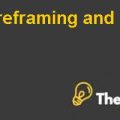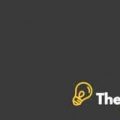What is quantitative easing and how likely is it to be implemented by the ECB?
Quantitative Easing:
Quantitative easing is a type monetary policy that the central bank (Federal Reserve) used to increase economic activities in the country when the monetary policy (the process by which central bank control the supply of money) becomes ineffective. Quantitative easing can lead to higher inflation rates if the supply of money increases too quickly.
However, quantitative easing is different from the usual monetary policies of the central bank. In quantitative easing, long-term government securities or other securities are purchased rather than short-term government securities or other securities and in quantitative easing; monetary policy has a money supply target rather than an interest rate target. Quantitative easing can also be used to ensure that the inflation rate does not fall below the target rate. Quantitative easing does not mean printing more banknotes. The central bank creates electronic money by purchasing government securities or other securities from investment institutions. The money which has been received by selling the government securities to the central bank as these investment institutions will buy another securities.
Process Chart of Quantitative Easing:
Money is created electronically by the central bank, which is used to purchase government bonds or other securities. Banks and investment firms gain excess funds; hence this increases the likelihood to conduct lending activities. With the increased liquidity; the economy begins to progress.
Objective of Quantitative Easing:
The objective of quantitative easing is to promote consumption and to get more money into the system. In addition, this is done with the intention to increase the lending by providing more cash into the hands of financial institutions.
Reasons for Quantitative Easing
- By providing the banking system with funds, increase the flow of cash money in the economy is an important reason for quantitative easing.
- When the interest rates of central banks approach to zero or exactly zero; then the quantitative easing may also occur.
- Unemployment is too high.
- Further, lending is prevented due to the defaulted loans.
Advantages of quantitative Easing:
Quantitative easing will increase the spending and profits. Employment rate will increase because of quantitative easing, which will lead the economy to recover. In addition, lower interest rates will result into more borrowings and less saving.
Disadvantages of quantitative Easing:
The benefits of quantitative easing are short-term. The excessive loans and borrowing can increase debt. The money created form quantitative easing can lead to a rise in the money which causes the inflation. Another risk of quantitative easing is that it has the potential to destroy the confidence in the economy.
Quantitative Easing Affects on Exchange Rate:
When a country engages in quantitative easing, this will result in depreciation of its exchange rate. It is possible that money supply will increase through quantitative easing and theory of money will lead to a rise in inflation. Speculator believes that when this will happen, selling domestic currency will cause the currency to depreciate.
Quantitative easing Implementation by ECB:
European Central Bank (ECB) was established by the Treaty of Amsterdam in 1998 and it is the central bank for the Euro. European Central Bank is the most important central bank and it is headquartered in Frankfurt, Germany. To maintain price stability within Euro zone is the aim of the European Central Bank. The quantitative easing was first implemented by ECB in 2007. The components of quantitative easing includes: an overnight interbank rate, a reserve deposit rate, a rate at which central banks lend to commercial banks, a reserve deposit rate and reserve requirement. It provides reserves to the European banking system when ECB engages in the purchase of securities. However, in the crisis of 2007-2009, the ECB sought to steady financial markets by providing most reserves through longer-term refinancing. It introduced many procedures to support the region and overcome this financial crisis period but when it failed to increase growth so they introduced loan system where lump sum amount was provided to national central bank after that it moved towards the bonds buying system. They moved closer towards buying bonds and other financial assets to get more cash into the economy. Mario Draghi, President of ECB gave a radical change to monetary easing programs by introducing unlimited bond buying programs in September 2012. It spent nearly $432 billion for monetary measures in January 2013.
By taking interest rates below zero, the ECB becomes the first major central bank on June 5, 2014. To encourage it to estimate activity by extending more credit, it also offered to lend banks up to 400 billion Euros ($542 billion). Cheap funding is proved by ECB to any bank that needs it on a temporary basis. More than 1 trillion Euro’s have borrowed in 3 year loans by the financial institutions (Jana Random, 6 June 2014).
European central bank has ..........................
This is just a sample partial case solution. Please place the order on the website to order your own originally done case solution.












